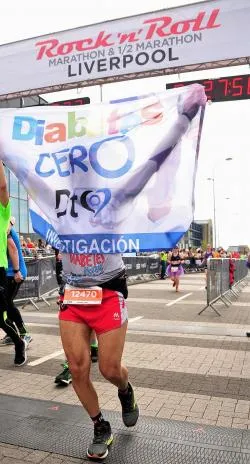Let's see.Glucose is found in different compartments (artery, veins, capillaries and finally the interstitial) and the methods differ by the technique it uses and the associated sensitivity.In order of the most sensitive sample is:
1) Plasma (venous blood), which is measured by an enzymatic method (oxidase glucose).It is the sample more that is analyzed in a way that gives sensitive results and is required for exams
On this same topic of the first point, the exams they can ask for are basal glycemia, which is done with 8 hours of fasting.Here are 3 conditions
1.2) 70 to 99 The patient is not diabetic, there is an exception that can happen here.That it gives that normal range, but it may give more homa to 2.5 or 2.6 (depending on the laboratory where it is performed), there the patient is insulin resistant and the doctor will see what to do
1.3) Then there is 100-125 glycemia, where this is an altered basal glycemia and the oral glucose tolerance test (PTGO) is performed
1.4) When it gives more than or equal to 126, the exam is repeated a second time and here can happen:
-Yes, the patient is more than or equal to, the patient is type 2 diabetic
-70-99 is not diabetic
-If it gives a range of 100-125, the PTGO is performed
1.5) Here the patient if he has more than 200 with random glycemia (without a fast condition), more presentation of symptoms such as polydipsea, polyuria and polyphia, the patient is diabetic type 2.
1.6) With respect to the PTGO, it is done with 12 hours of fasting, a basal glycemia (fasting) is taken and then at 2 hours (post-pandarial).There are laboratories that perform the consecutive take insulin (insulin curve) and use more than two points (two minimum points, they can go from 4 shots to 6).Now, by glycemia you can diagnose diabetes.
-Yes, the patient has fasting glycemia with a range of 100-125 and postpandrial of less than or equal to 140. The patient has eased glycemia (prediabets)
-Yes, the patient has a fasting glycemia between 70-99 but postpondrial of 141-199.The patient has glucose intolerance
-Yes, the patient has in postpondrial glycemia greater than 200. It is type two diabetic.
The states of prediabetes are those that the patient does not meet the condition of being diabetic.Prediabetics while producing insulin, this can pursue with hyperinsulinemia with insulin resistance.This type of patient has a reversible condition that are treated with metformin or hypoglycemic agents plus diet.A type two diabetic is insulin resistant combined with hypoinsulinemia by pancreatic wear.The states of prediabetes refer to states that can be reversible.
The aforementioned is all the technicalism associated with the venous blood sample to perform glycemia.It is a method that is standardized since they require samples (populations) to determine what glycemia is normal and which is pathological.For this reason there are ranges of glycemia where there are no symptoms associated with diabetes with the Poly Triad (Polidipsea, Polifagia and Polyuria) and these glycemia are those that require some extra test.For this reason, random glycemia greater than or equal to 200 with the presentation of symptoms is the diagnosis of type two diabetes.For those who do not present the symptomatology (altered basal glycemia that is 100 to 125) the PTGO is performed
2) Glycemia performed by glucometer is a quick test, it does not use an enzymatic method such as oxidase glucose.As far as glucometers are measured as spent oxygen and that is proportional to glucose concentration.
3) The one of insertitial fluid being a more superficial compartment, the concentration of glucose here reaches the end and differs with that of capillary glucose for about 15 minutes.Therefore it is not recommendedAn eesta glycemia while feeling hypoglycemic or hyperglycemic because it is a look at the past.





